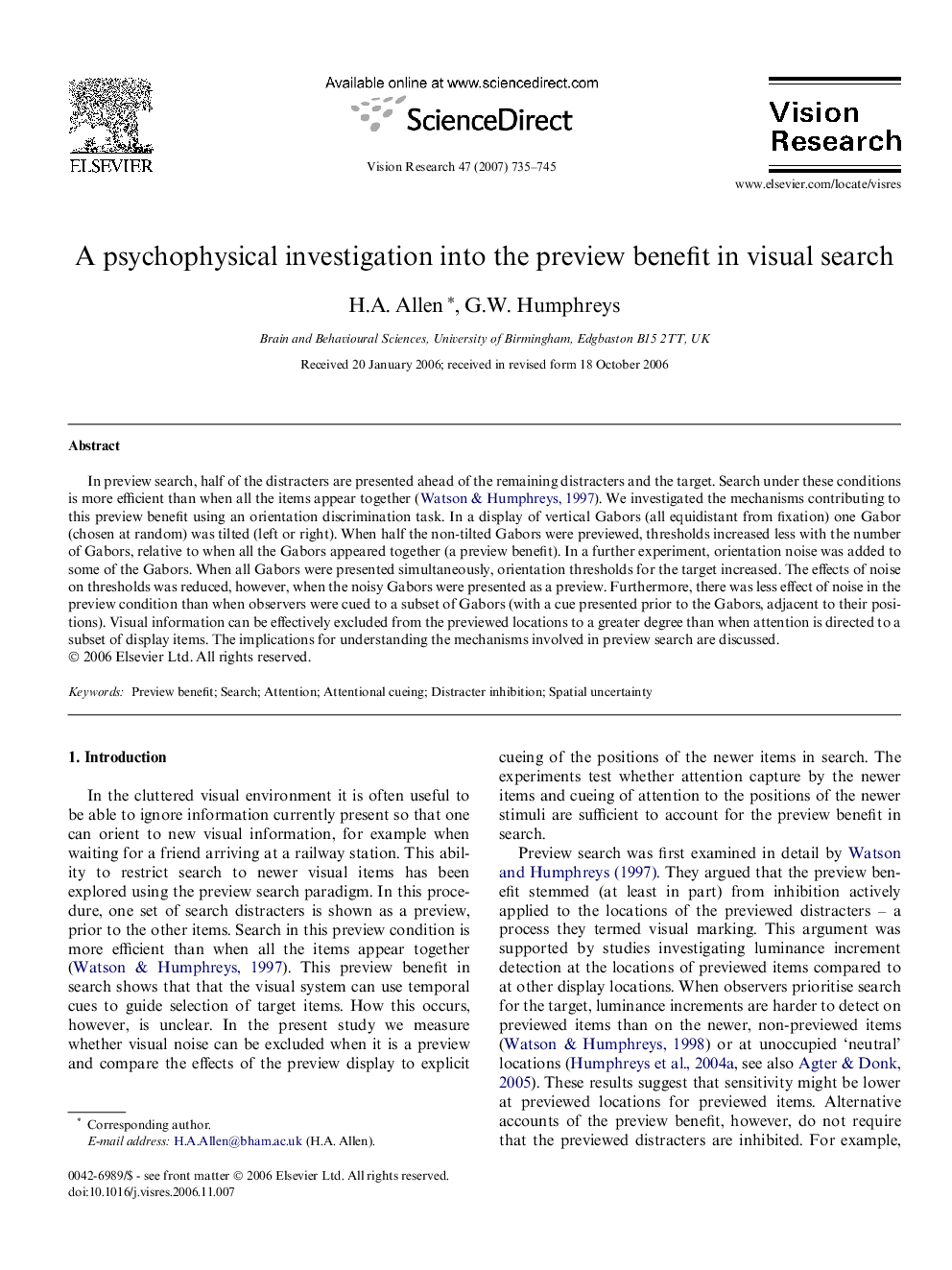| Article ID | Journal | Published Year | Pages | File Type |
|---|---|---|---|---|
| 4035846 | Vision Research | 2007 | 11 Pages |
In preview search, half of the distracters are presented ahead of the remaining distracters and the target. Search under these conditions is more efficient than when all the items appear together (Watson & Humphreys, 1997). We investigated the mechanisms contributing to this preview benefit using an orientation discrimination task. In a display of vertical Gabors (all equidistant from fixation) one Gabor (chosen at random) was tilted (left or right). When half the non-tilted Gabors were previewed, thresholds increased less with the number of Gabors, relative to when all the Gabors appeared together (a preview benefit). In a further experiment, orientation noise was added to some of the Gabors. When all Gabors were presented simultaneously, orientation thresholds for the target increased. The effects of noise on thresholds was reduced, however, when the noisy Gabors were presented as a preview. Furthermore, there was less effect of noise in the preview condition than when observers were cued to a subset of Gabors (with a cue presented prior to the Gabors, adjacent to their positions). Visual information can be effectively excluded from the previewed locations to a greater degree than when attention is directed to a subset of display items. The implications for understanding the mechanisms involved in preview search are discussed.
